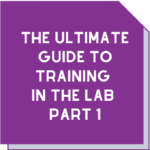Making your internal audits meaningful not mediocre
 Evidence of auditing has been discovered dating from the fourth millennium BC.
Evidence of auditing has been discovered dating from the fourth millennium BC.
Scribes in Mesopotamia kept records on clay tablets, some of which showed tiny marks beside the figures. These dots, ticks and circles indicate that checking of the records had been done.
While we still use tablets today, generally they’re the electronic kind
(if not, we’d recommend speaking to management about an upgrade…).
Internal audits may not be high on your list of fun things to do (unless you’re an auditor of course!) but as we all know, they’re an essential part of lab life.
Remember, internal audits aren’t just to keep NATA or your certification body happy. They’re an important part of ensuring your processes are working well. They are the lifeblood of any good quality assurance and quality control program. They help keep track of your activities and drive improvements.
So that means developing a culture that sees audits as a positive thing, with auditors and auditees working together to find ways to do things better. But even if your business isn’t quite at this point, everyone accepts that internal audits are a ‘necessary evil’.
Who should do them?
 Whether they’re technical or management systems audits, the attributes of the person carrying out the audit should be the same.
Whether they’re technical or management systems audits, the attributes of the person carrying out the audit should be the same.
This means that the auditor should be professional, observant, and a good listener.
Remember, this is not about finding fault.
The auditor’s focus is on assessing the compliance of procedures, processes and information against specific audit criteria based on the relevant standard or requirements. And their findings should be based on evidence not gut feelings.
If the activity is more technical in nature (perhaps sampling or a particular test or calibration method) it’s best to have someone who is independent but with a suitable technical background carrying out the audit. In a small lab this could be difficult so consider having an external provider carry this out.
Why should we do them?
Simply put, the purpose of an internal audit is to assess if the activity being observed is producing valid and technically sound results.
To do this, an internal auditor has a number of tools at their disposal (along with the attributes we already mentioned). These include checklists, reviewing documents and witnessing activities.
Naturally the questioning and listening phase of the audit is critical to obtaining the full picture. Engaging with the auditee means developing a deeper understanding of their work and any issues they may be facing
The auditor then evaluates their findings against the requirements to determine whether these have been met (conformance) or not (nonconformance).
A word about checklists
Checklists are important tools for outlining the scope of the audit and keeping it on track. Use checklists to:
- Promote planning for the audit and act as a memory aid
- Help auditors seek objective evidence against the criteria
- Document observations
- Record audit findings, documents and records supplied during the audit
- Justify those findings as conforming or nonconforming against the audit criteria
- Provide objective evidence that an internal audit was performed
- Provide a basis for discussing with the auditee any nonconformances discovered during the audit.
However, checklists should not:
- Be a ‘tick and flick’ exercise – not all questions have yes or no answers
- Substitute for proper audit planning
- Have a laser focus on just one narrow scope in a process
- Provide a script for the auditor
- Be completely generic and unrelated to the process being observed
- Allow an auditor to excuse their non-interaction.
If possible, using or adapting the accreditation or certification body’s checklists is a great idea. This could help during an actual assessment by providing some familiarity for the auditee to the assessment process.
How long should an internal audit take?
Depending on the type of audit and its scope, an audit could take anywhere from an hour or two to several days.
Shorter, vertical and horizontal audits will be less time consuming than a full audit covering all clauses of a management system standard. For a large lab with a number of accredited tests, your audit program should consider a ‘little and often’ approach.
Regardless of it’s structure, your program should cover all of your accredited activities over a 12-month period. That doesn’t mean you need to audit every single test or calibration.
There’s no downside!
Developing an effective internal audit program is rewarding for everyone.
By training them to carry out audits, lab staff gain new skills and an appreciation for other areas of the business. They’ll also become more familiar with the auditing process, allowing them to feel more comfortable with external audits when they occur.
The lab system will also benefit from regular auditing, becoming more robust and experiencing fewer nonconforming events. This will also allow staff members to see first-hand how valuable audits are for driving improvements and controlling risks.
And also consider this: an internal audit is like providing management with an advisory service. By undertaking effective and regular audits, management can be provided with reports on emerging risks and issues.
Implement improvement actions in line with risk assessments. An internal audit can follow up on previous audit recommendations and provide insight on their implementation and effectiveness.
All of this adds up to a cost benefit and risk reduction, both of which should keep management happy.
The final word
So given all the above, it seems like internal audits are a no-brainer. But we also understand that in a busy lab with only the necessary staff, the time taken to carry out an internal audit feels like a luxury.
If you do have staff who are willing and interested in becoming an auditor, we have a one-day internal audit course that will suit you perfectly. You can read all about this training course on our website.
 However, if you simply don’t have the time or capacity to carry out internal audits, we can help with that too.
However, if you simply don’t have the time or capacity to carry out internal audits, we can help with that too.
For example, we can develop an internal audit schedule in collaboration with you which considers your staff and activities.
Then we can carry out those audits for you, delivering an efficient, cost-effective solution that ensures you meet your NATA or certification body requirements.
Call Maree on 0411 540 709 for a confidential, obligation free discussion about how we can support your internal audit goals.
Remember, you don’t have to do this alone!
Download the article Making your internal audits meaningful not mediocre





